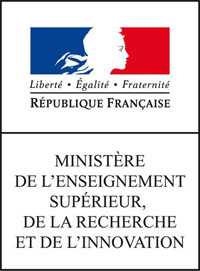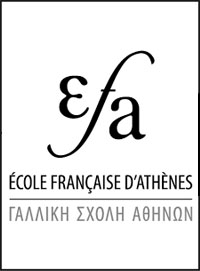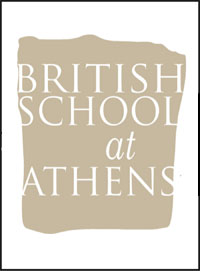Ancient Corinth - 2023
Archaia Korinthos, Palaia
NE of the theatre, multiple road layers of the NS Byzantine (12th century and later) road that had been identified in previous seasons was revealed, as well as an additional stretch of the long wall that bounded the east side of the Byzantine road. From the stratigraphic sequence revealed this year, it appears that once this wall was destroyed, the uppermost preserved road layer extended over the top of its extensively plundered remains. Directly east of this wall, a stone-lined rectangular pit was revealed below an accumulation of fill datable to the first half of the 13th century. Fill within the pit included a nearly complete Measles Ware bowl and Fine Sgraffito plate (Fig. 2), as well as cooking and plain wares. A small portion of the underlying Roman road layer with an embedded terracotta water pipe was also exposed beneath the lowest Byzantine road layer. Elsewhere the Roman road was disturbed by pits and a deep robbing trench (already partially revealed in 2022 to the south), which extended down into a partially plundered vaulted drain that ran below the axis of the road. To the east of the vaulted drain, part of a second ancillary drain was revealed directly north of another discovered in 2022.
Part of the west wall of the Late Roman “Marble Room” was also discovered at a distance of 10.53m from the east wall (Figures 2, 5). A large doorway to provided access to the room, and it is lined with a marble veneered bench to match the benches preserved along the exposed portions of the east and south walls of the room. The original opus sectile pavement of the room is poorly preserved in the newly exposed area, but the overall pattern of circles in a reticulate pattern, can be recovered despite the lacunae and crude repairs (Fig. 3).
A colossal marble arm, probably from a portrait of a Roman emperor, and a life-size Roman marble copy of the head of the Early Classical Candia Peplophoros type (Fig. 4) came to light in 7th-century fill, as well as the torso of a Roman marble copy of the “Pothos” commonly associated with Skopas. Along the north side of the newly exposed portion of Marble Room, excavation revealed an additional 7.5 m of the Late Antique wall that runs east-west over the northern part of the Marble Room. The newly revealed portion of the wall is provided with a large doorway connecting the Marble Room to the presumed interior of the structure to the north. The identity of the structure to which this later wall belongs is yet to be confirmed.
A hoard of 36 coins (all Anonymous Class G bronze folles, A.D. 1065-1070, was discovered) was found in a deep general fill of 12th century date, which was found overlying the Late Antique fill that directly covered the floor of the Marble Building.
Six graves were also exposed in in close proximity to 11 others excavated in 2019 and 2022 (Fig. 5), in narrow, shallow pit graves lying directly below the plow zone. In all cases the positioning of the bodies was supine with both forearms (or, in one case, one forearm) crossing the torso. In all but one instance, the head was positioned to the west. The discovery of a small bronze cross at the neck of one of the deceased, confirms that this was a Christian cemetery.
Légende graphique :
![]() localisation de la fouille/de l'opération
localisation de la fouille/de l'opération
![]() localisation du toponyme
localisation du toponyme
![]() polygone du toponyme Chronique
polygone du toponyme Chronique
Fonctionnalités de la carte :
![]() sélectionner un autre fond de plan
sélectionner un autre fond de plan
![]() se rapprocher ou s'éloigner de la zone
se rapprocher ou s'éloigner de la zone
![]() afficher la carte en plein écran
afficher la carte en plein écran








